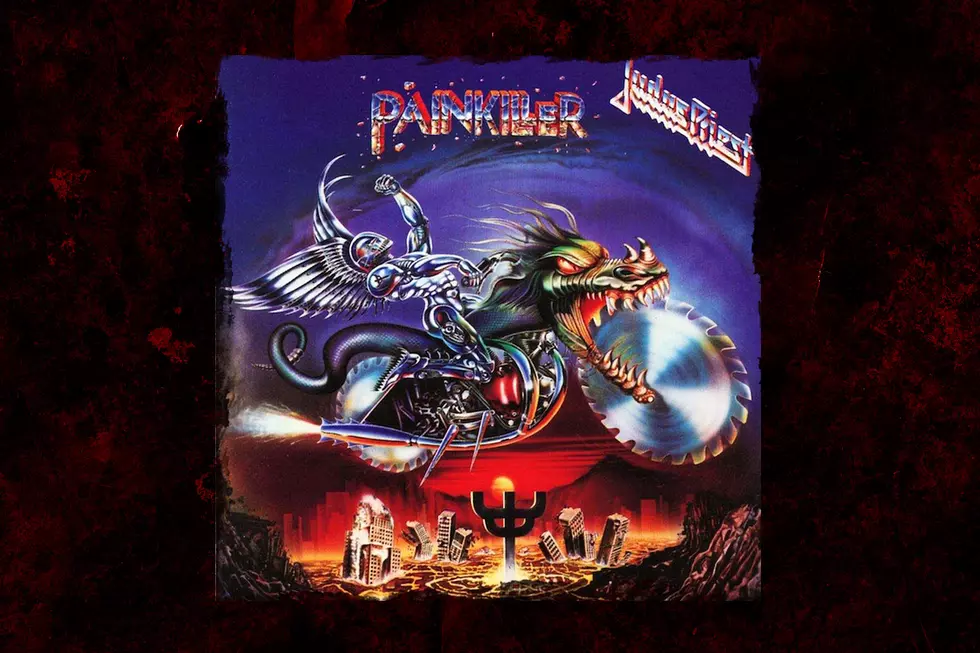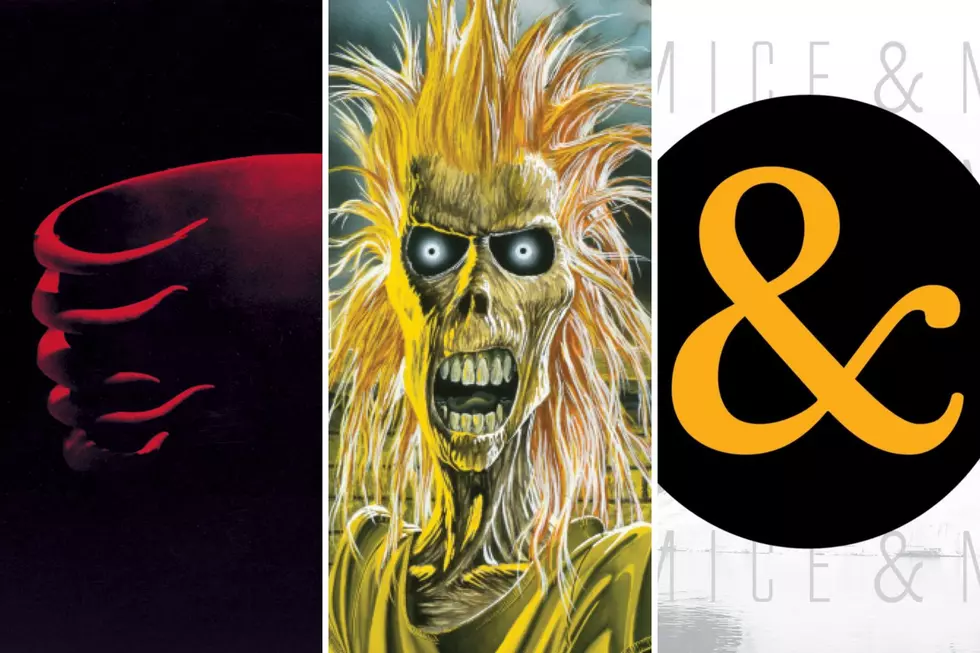
33 Years Ago: Judas Priest Ramp Up the Metal With ‘Painkiller’
By the mid-1980s, British metal pioneers Judas Priest seemed like they were running out of ideas, or at the very least, losing focus. 1986’s Turbo featured chirpy keyboards that sounded new wavey and 1988’s Ram It Down was slightly heavier, but marred by sub-par songwriting and out-of-place synths, and it featured an awful cover of Chuck Berry’s “Johnny B. Goode.”
Just when it looked like Judas Priest had been dethroned by a new wave of thrash bands that included Metallica, Megadeth, Slayer and Anthrax, the defenders of metal lashed back with their 12th album, Painkiller, which was released on Sept. 3, 1990.
In an effort to recapture the credibility they once held so dear, Judas Priest ratcheted up the tempos, ramped up their aggression and wrote a batch of songs that approached the ferocity of speed metal. Straight out of the gate, Priest fired on all cylinders with a barrage of hammering double-bass drumming, blowtorch guitars and banshee vocal shrieks.
“I just think that the early thrash metal movement was a sign that the industry had to keep evolving and moving and so do the bands,” ex-guitarist K.K. Downing told me in 2010. “It’s just the natural course, and at that particular time I just thought something new is always good. I can remember doing gigs with Slayer in the early ‘80s, and guess I resigned myself to accepting the fact that it was bound to go this way. So then when Priest did Painkiller, it was bound to be an inspiration for a lot of bands to get faster and heavier.”
Judas Priest, "Painkiller"
Iconic vocalist Rob Halford still considers the title track, a barreling showcase of speed and agility, to be one of his favorite Priest tunes. The song tells the story of a gleaming metal angel sent to avenge mankind from the evildoers in the world. “I think it's a wonderful statement. It embodies what metal is - it's everything a full-on screamy metal track should have,” he told Kerrang! magazine in 2013. “Everybody is going a million miles an hour on it, and yet the melody still comes across. It's become a very important song for Priest, and for metal too, I think.”
Other tracks, including the chunky, chugging “Hell Patrol” (about U.S. pilots in the first Gulf War), the guitar-blazing “Metal Meltdown,” the charged, melodic “Between the Hammer & the Anvil” and the slower, hook-saturated “A Touch of Evil” were instrumental in proving to old fans that the band could crush and maim with feral abandon and then step back and deliver a more deliberate blast of mid-paced songwriting.
Judas Priest, "A Touch of Evil"
Painkiller marked the debut of drummer Scott Travis (ex-Racer X), who provided more urgency and flair to the band’s songs than Judas Priest’s earlier drummers, perfectly complementing the band’s renewed energy and immediacy. Travis, who has been with the band for 25 years, is Judas Priest’s longest lasting drummer.
The group started writing Painkiller in late 1989 and entered Miraval Studios in Correns, France, with producer Chris Tsangarides (Anvil, Thin Lizzy, Black Sabbath) in January, 1990. Three months later, the band finished the record at Wisseloord Studios in Hilversum, Netherlands. Judas Priest had wanted to release Painkiller as soon as possible so fans would know the songs by the time the group was knee-deep into summer touring.
However, CBS Records decided to postpone the release of the album until the verdict from the Vance Vs. Judas Priest trial came in. The court case involved two young adults in Reno, Nevada, who entered a suicide pact on Dec. 23, 1985 after receiving “so called” subliminal messages from the song to “Better By You, Better Than Me,” which is on Judas Priest’s 1978 album Stained Class. The case was dismissed due to lack of evidence on August 24, 1990 and CBS promptly found a slot on their release schedule for Painkiller.
Judas Priest, "Hell Patrol"
The album entered the Billboard album chart at No. 26 and went gold four months later. To date, Painkiller has sold over two million copies worldwide. Judas Priest toured around the world throughout 1991, but during that time tensions were growing between Halford and the rest of the band. The singer wanted to pursue his own brand of thrash-influenced metal with a side project and his bandmates felt he should devote himself solely to Priest, especially since the group seemed to be staging a comeback. Incensed, Halford quit in 1992 via a fax and continued his metal career, first with Fight, then with Halford.
Judas Priest took some time off, then returned with new vocalist Tim “Ripper” Owens in 1996. Interest in the band waned and the venues they played became smaller. Twelve years after quitting, Halford returned to Judas Priest to play Ozzfest and the band’s career was effectively resurrected.
Loudwire contributor Jon Wiederhorn is the author of Raising Hell: Backstage Tales From the Lives of Metal Legends, co-author of Louder Than Hell: The Definitive Oral History of Metal, as well as the co-author of Scott Ian’s autobiography, I’m the Man: The Story of That Guy From Anthrax, and Al Jourgensen’s autobiography, Ministry: The Lost Gospels According to Al Jourgensen and the Agnostic Front book My Riot! Grit, Guts and Glory.
Judas Priest Albums Ranked
More From Loudwire









